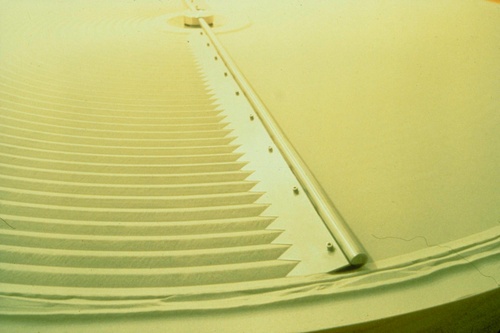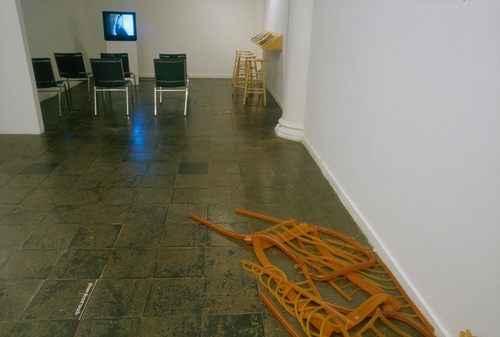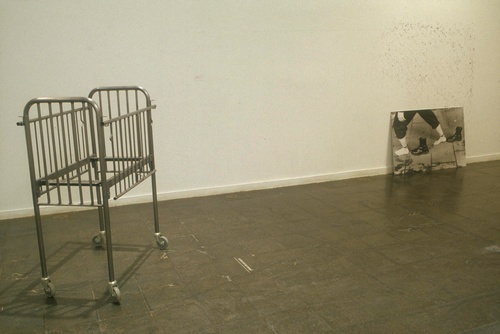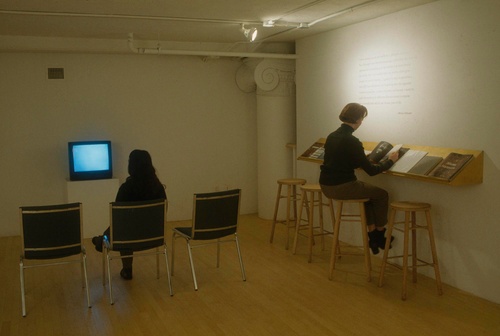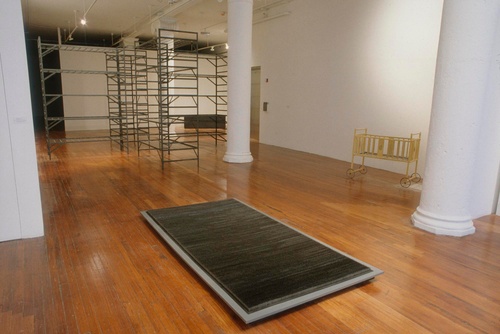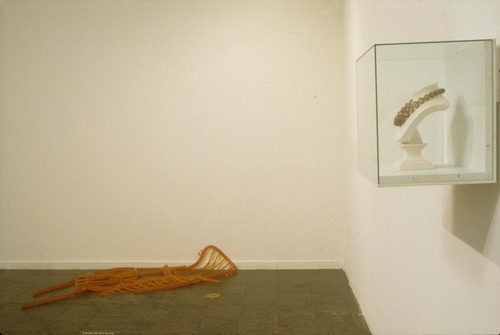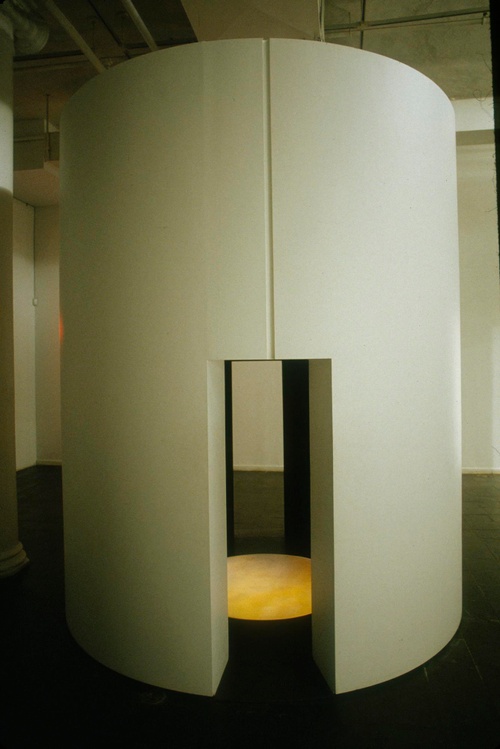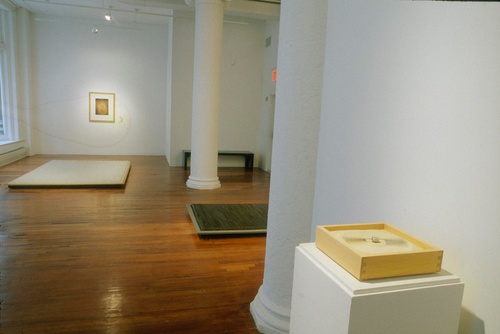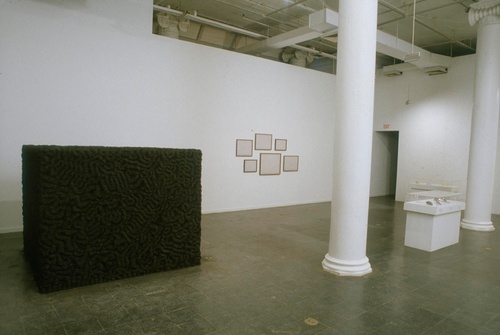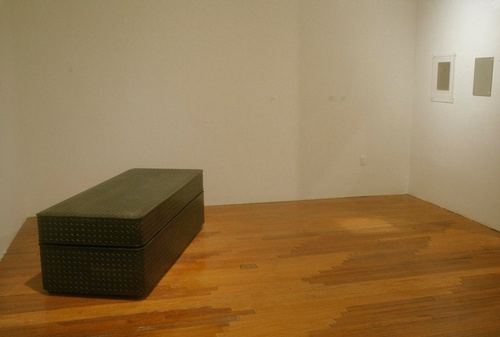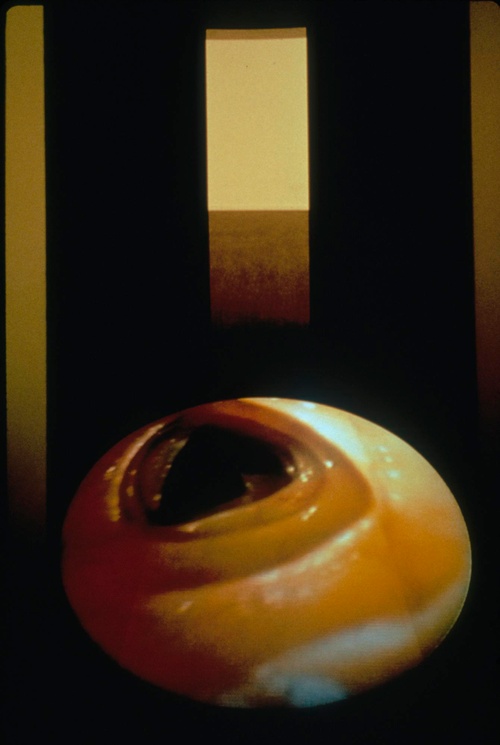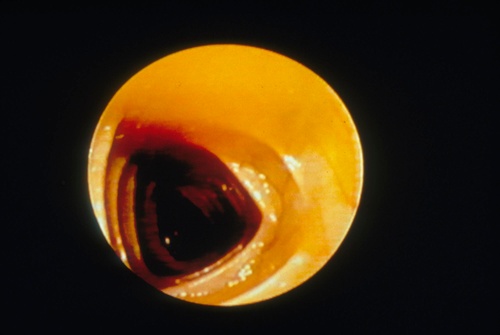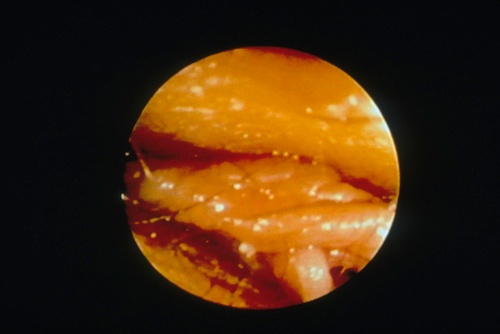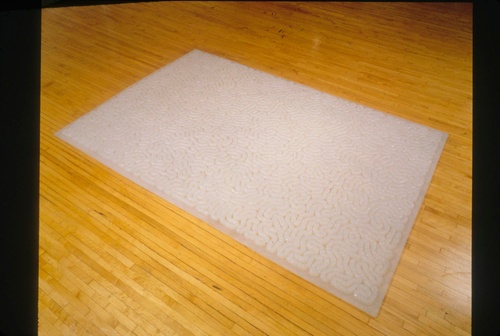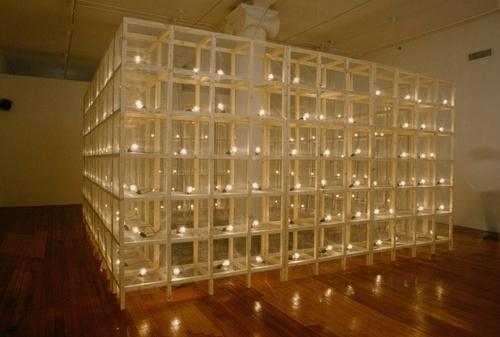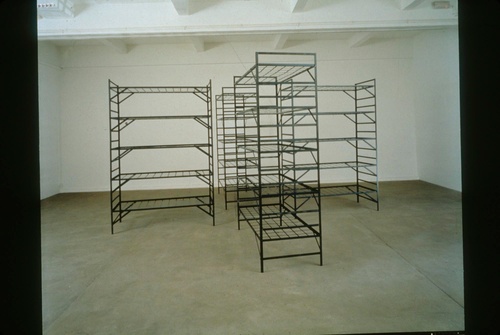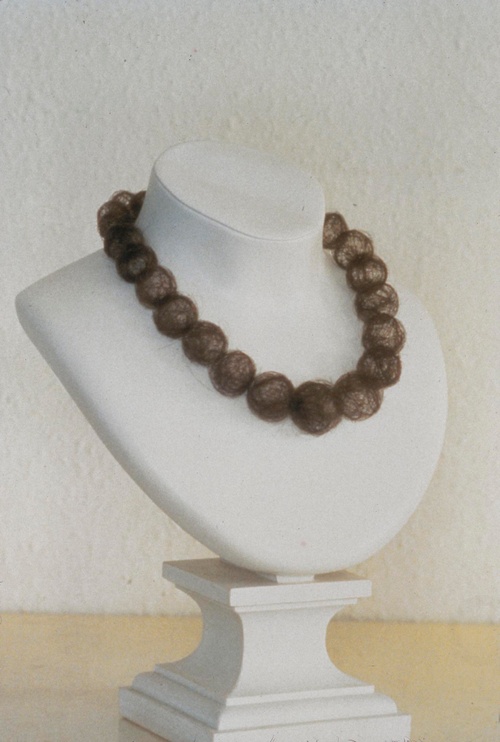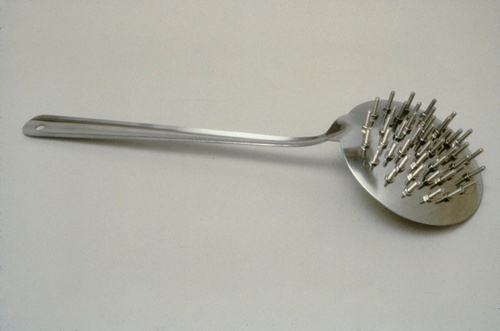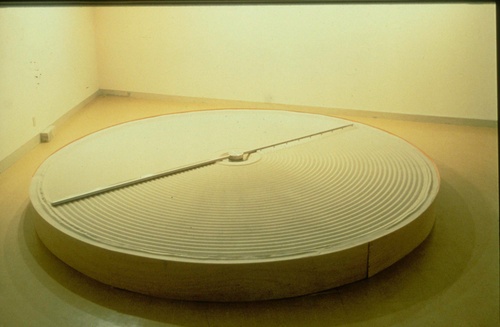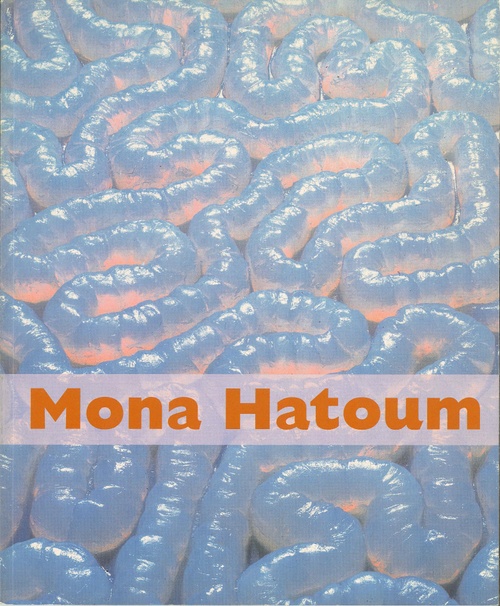Mona Hatoum
Mona Hatoum
Mona Hatoum’s art invites us to experience a new cultural intersections that links our identities with the physical and perceptual world surrounding us. Like many artists working today, Hatoum employs a wide variety of media and techniques, but her unique style is characterized by forms and materials that evoke feelings of intimacy and familiarity, while simultaneously suggesting the possibility (whether real or imagined) of physical danger. Applying her considerable formal skills to draw the viewer into close visual and psychological proximity with her work, Hatoum complicates these strategies with frequent quotations from Minimalist and Conceptualist practices of the 1960s, as well as with the use of industrial processes and materials. The resulting tension between the distance which causes forms to appear stable, and the proximity that reveals the element of danger, permits the viewer to make the leap from a perceptual experience to its applicability as a metaphor for cultural relations within a broader social framework.
Like many young artists whose work emerged in Great Britain and in the U.S. during the early 1980s, Hatoum’s early development was shaped by the fusion of artistic languages from the previous decade, such as video and performance art, with the rapidly shifting social and cultural milieu in which the artists were immersed. An example of this phase of Hatoum’s work is the photo from the performance Roadworks (1985), which was staged in London’s Brixton neighborhood; it refers obliquely to the well-known riots that occurred there the year before in response to police violence. By tying a pair of military-type Doc Martens boots to her bare ankles and dragging them behind her in the street, Hatoum created a metaphor for the frustration and helplessness characteristic of the times. In the performance Under Siege (1983), parts of which are included in the 1984 video Changing Parts, the artist struggled in vain to release herself from a container, generating an anxiety that suggests the agony of birth or entrapment. Measures of Distance (1988), a 15-minute video work, tacitly foreshadows Hatoum’s evolution from the more subjective perspective of performance-based work to the sculptures and installations she has produced in the intervening decade. The video’s key footage uses a visual screen of Arabic script – taken from a series of letters between the artist and her mother – that is superimposed over the filmed image of her mother taking a shower. The screen both frames and obscures her mother’s body. In both the literal sense that it was made during a visit home, and in a broader sense as well, Measures of Distance is one of the few examples of Hatoum’s work to employ direct reference to the artist’s exiled condition.
Hatoum, a Palestinian born in Beirut in 1952, was stranded in Europe at the outset of civil war in 1975 (the municipal airport in Beirut was closed for nine months), and decided to study art in London, where she has subsequently lived most of her adult life. In the video’s soundtrack, as well as in the graphic image of text layered over flesh, Hatoum explores how degrees of proximity and separation can be conveyed by employing both concrete examples (her mother taking a shower), and more formal abstractions (text, paper, voices, a trip to Beirut). Hatoum’s first large-scale installation works of the early 1990s, such as Socle du Monde (“Pedestal of the World,” 1992-93), make use of electricity in the form of light, electromagnetism or electric heat to suggest correspondences between living and inorganic forces. In punning reference to Piero Manzoni’s 1961 work of the same name, in which a cube was buried beneath the surface of the earth, Socle du Monde consists of a large metal cube covered by magnets and iron filings. Most viewers encounter the work in two stages: first, as a monolithic form seen from a distance; then, as a surface examined more closely, revealing the undulating patterns created by the filings’ alignment according to poles of attraction and repulsion. The contrast between the appearance of solidity and the reality of a fluctuating surface can be interpreted as both a miniaturized world view and an enlarged microscopic image.
Many of Hatoum’s more recent furniture-based sculptures employ a similar combination of illusion and reality. A telling example is Incommunicado (1993), an infant’s metal crib that utilizes a series of tightly strung wires in place of a cushion, suggesting both a cage as well as a potentially dangerous lack of function. The crib motif is repeated in First Step (1996) and Marrow (1996), also included here. In the first work, traces of movement are seen in the form of track marks through powdered sugar made by the crib’s wheels, despite the fact that its occupant is nowhere to be found. In Marrow, a crib cast in rubber results in a useless pile of limp structural parts that disturbingly resemble a creature that has discarded its shell. Rather than a soft version of a crib, however, the work’s title suggests that it is the hidden, fragile interior of an object otherwise identifiable by its hard exterior. A number of Hatoum’s smaller sculptural objects have been brought together for this occasion and are presented in vitrines, temporarily removing them from an environment in which they would otherwise presumably be functional. Two of her earlier wall-hung objects, High Relief (1992) and You are Still Here (1994), combine the viewer’s mirrored reflection with fairly explicit textual inscriptions. In a group of works from 1996, No Way, No Way II, and Nablus Soap, everyday objects have been pierced by pins or run through with bolts to make composites which by being secured have been stripped of their vitality. Hatoum’s Eye-catchers (1997), which resemble novelty eyeglasses, offer a similar double bind: while ostensibly setting up a bejewelled field through which the wearer might view the world, the “glasses” obscure vision by literally and symbolically preventing one from seeing. One of Hatoum’s most compelling object-sculptures, Hair Necklace (1995), is a painstakingly crafted illusion of a piece of jewelry made from the artist’s hair. Corps étranger (“Foreign Bodies,” 1994), perhaps Hatoum’s best-known work, is being seen in New York for the first time.
Using techniques of endoscopic photography most closely associated with surgery, the artist began the work by passing a camera throughout her body, inserting it into each orifice as far as possible. Splicing the footage together into a continuous loop, Hatoum added a soundtrack consisting of magnified sounds of the body’s internal organs. The video is projected onto the floor of a half-open oval structure which the viewer must enter to see the work clearly. The viewer’s required position – standing over the projected image of the body’s interior – creates a sense of vertigo, heightened by the degree of magnification and the relatively claustrophobic space. One of the hallmarks of Hatoum’s recent large installations, such as Quarters (1996) and Current Disturbance (1996), is the almost theatrical way the viewer is drawn toward the work. Quarters, which greets the visitor exiting the elevator into the second floor gallery, is immediately striking for its stark and barren appearance: four identical upright metal units of five levels each are squared off against one another. Too regimented to be shelving but too restricting to be bunk beds, the units convey a palpable sense of confinement in their unapologetic emptiness. In Current Disturbance, viewers are simultaneously attracted and repelled by light and sound from a metal grid made up of small shelflike units, on which bare electric bulbs dim and brighten at random intervals, the sound of their burning filaments amplified through a network of microphones and speakers. With her more intimately scaled works of the past few years, Hatoum has ventured into realms of identity that are both consistent and unexpected. Two works on the second floor gallery, Pin Carpet and Entrails Carpet (both 1995), employ completely different materials to achieve similar results. The first work, whose title conjures up images of genies on flying carpets and fakirs on beds of nails, is surprising in its organic appearance, especially when the thousands of individual pins reflect the movement of natural light across their surface. While the rubbery surface texture of Entrails Carpet might repel the viewer at first, the sinewy undulations of the endless intestinal passage become abstractions the longer the viewer gazes at them. In a sense, this middle zone between abstraction and representation stands for the ambiguous state into which Hatoum’s work transports us – a place where a biological reality and a cultural definition of self are constantly about to trade places.
-Dan Cameron, Senior Curator
